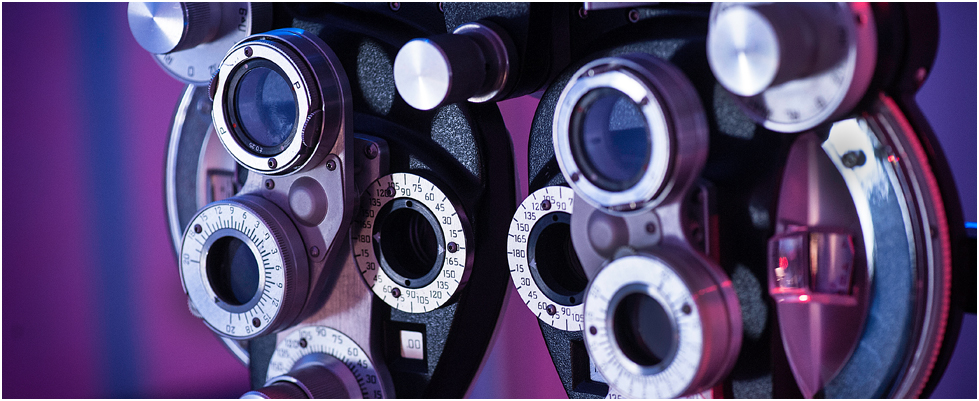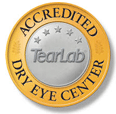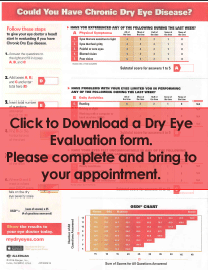About Dry Eye
Dry eye is extremely common. It is estimated that in the United States alone, 20-30 million people have mild symptoms of dry eye and another 6 million women and 3 million men have moderate or severe symptoms of dry eye. In fact, dry eye problems are some of the most common complaints we hear and treat at Baltimore Washington Eye Center.
Diagnosis of Dry Eye
The accurate diagnosis of dry eyes or dry eye disease requires a thorough eye exam with one of the eye doctors at Baltimore Washington Eye Center. We will ask you to describe your dry eye symptoms and the impact that they have on your daily life and will take time to carefully review your medical history, eye history and eye conditions including any medications that you are taking. Please be sure to tell us about all of the medications you take or have taken recently, including not only the ones prescribed, but those that you may have purchased on your own at the pharmacy.
We may perform one or more tests to assess your condition that might include evaluation of your tear production by using a specialized microscopic technique to observe the height of the tear film as well by using a clinical test called a Schirmer Test that allows us to actually measure the rate at which you produce natural tears. The eye doctors may also use specially formulated dyes such as Fluorescein, Lissamine and Rose Bengal to help investigate the functioning of the various layers of the tear film as well as the underlying surface of the eye. This is not uncomfortable and will not interfere with your vision.
Tear osmolarity has been shown to have the best predictive value for diagnosing dry eye disease of any single test. Baltimore Washington Eye Center is an accredited TearLab® Dry Eye Center. The TearLab® Osmolarity Test uses a sophisticated lab on a chip technology to test a tiny tear sample to measure the salt content in the tears. We will test both eyes, and will take the highest number of the two tests, to generate your osmolarity number which gives the doctors a meaningful measure of the health and stability of the protective tear film that covers the surface of your eyes.
Symptoms of Dry Eye
The symptoms of dry are often troubling enough that they cause patients to have a combination of the common sensations of dryness, grittiness and burning along with difficulty while trying to read, use computer screens, mobile devices, drive, or even watch television. Dry eyes and dry eye syndrome not only cause discomfort, but can also have a negative impact on performing daily activities. In order to be comfortable and see clearly we need to have a sufficient quantity of healthy tears on the surface of the eye at all times. Dry eye can result from not producing enough of your own tears or an excessive evaporation of the tears you do produce, or a combination of these factors.
Tear Production
There are many potential reasons that you may not produce an adequate quantity of tears, including certain types of systemic diseases such as Sjögren’s Syndrome, Rheumatoid Arthritis and Lupus Erythematosus, various types of inflammation, long term contact lens wear, past eye infections, allergies, and even vitamin deficiencies.
Evaporation of Tears
Many factors can cause your tears to evaporate too quickly or excessively. These might include environmental factors such as exposure to forced air heating at home or at work, dry climate in general, air travel, reduced blinking from contact lens wear, prolonged computer use or reading, air pollution, or even just blowing your hair dry.
Your tears may evaporate too quickly if you suffer from low-grade eyelid inflammation, called Blepharitis. Within your eyelids are tiny tubular glands called Meibomian Glands. Inflammation of the eyelids, from Blepharitis, or a condition called Rosacea, can cause the Meibomian Glands to stop functioning properly and decrease the production of the oil they secrete. Meibomian Gland Dysfunction (MGD) causes your tears to evaporate too quickly leading to dry eye symptoms which might include dryness, irritation, redness, watering, grittiness, and even pain. MGD is the most common cause of dry eye syndrome with a significant impact on your quality of life, function and comfort as without the oily layer being healthy; it is very likely that you will have the symptoms noted. MGD also may also be the initial cause of the Blepharitis which can caused your eyelids to become red, crusty and inflamed.
This is an especially common problem for perimenopausal women, as it is believed that 75% of women in this age group have some presence of facial rosacea. This, along with the general hormonal changes occurring during this time, makes perimenopausal woman particularly susceptible to dry eyes.
Finally, your tear film may evaporate too quickly if the tears are not properly spread and replenished over the surface of the eye because of poor eyelid movement. This may be due to a number of factors including:
- Improper or incomplete closure of your eyes during sleep
- Eye “bulging” conditions that may be related to thyroid problems
- Loss of tone or shape of the eyelids so that they turn in or turn out, called entropion and ectropion.
Treatment & Help for Dry Eye
Depending on the severity and the cause of your dry eyes, we may recommend a number of different treatment options to help your dry eye problems including Restasis® prescription eye drops, punctal plugs, artificial tears, and even dietary supplements.
If you have mild or even moderate dry eyes, the first course of treatment may be to use unpreserved artificial tears. The selection of the exact type of artificial tear eye drop is important. Depending on the nature of your tear film deficiency, we may have you use a specific type of artificial tear with specific characteristics in terms of salt content and viscosity.
There may some environmental factors that you need to alter to make you more comfortable such as how and where you are exposed to heat ducts or fans blowing, as well as attempting to keep the areas that you spend a great deal of time in at a proper humidity level.
If the oily layer of the tear film is deficient, we may suggest that you increase your consumption of oily fish, take omega 3 vitamin supplements, or even take flax seed oil as a dietary supplement. Supplements can vary in their potency and efficacy, and the doctors at Baltimore Washington Eye Center will make the appropriate recommendations. Most likely you will also be asked to drink plenty of water.
About LipiFlow® for Dry Eye & Meibomian Gland Dysfunction

Until now eye doctors have used warm compresses, digital massage and eye drops to attempt to treat Meibomian Gland Dysfunction. Thanks to advances in Vectored Thermal Pulsation (VTP) technology the eye doctors at Baltimore Washington Eye Center are now able to treat MGD, dry eye and related eyelid problems such as Blepharitis using a device called LipiFlow®. LipiFlow® is an electronic device cleared by the FDA for the treatment of MGD by removing blockages of the glands and restoration of their function so that they provide normal oily secretions for a healthy tear film. LipiFlow® is an in-office procedure that uses directed heat and gentle pressure to liquefy and express the contents of the Meibomian glands. In a clinical study, 90% of patients achieved improvements in gland secretions after a single LipiFlow® treatment.
About Punctal Plugs
In instances where these approaches do not help relieve your dry eye symptoms, we may suggest the insertion of tiny punctal plugs that will slow down or even stop the drainage of tears from the eye. These plugs are easily and comfortably placed in the Lacrimal Puncta in your eyelids. There are two puncta per eye, one per each of the upper and lower eyelids. Initially you may have a temporary dissolving plug put in place to see if your dry eye symptoms are responsive to this treatment. If the results are good, it may be necessary to place a more permanent type of plug in the Lacrimal Puncta to affect a long-term solution. These plugs can remain in place indefinitely, but can also be removed as needed.
About Restasis® Eye Drops
For patients with moderate to severe dry eyes who may have already tried using artificial tear eye drops and punctal plugs without relief, the prescription of Restasis® eye drops with or without the other treatments may often help alleviate your symptoms. Restasis® works by preventing a type of inflammatory cell from entering the Lacrimal Gland and thus allows your Lacrimal Gland to function more effectively, allowing people who suffer from dry eye to make more of their own natural tears. Restasis® eye drops require several weeks of use to become effective, so please use these drops exactly as they are prescribed and please be patient.
Even with the above treatment options, there are some patients that may not respond as well as desired due to some underlying low-grade inflammatory or infectious process. In these cases, it may be necessary for us to also prescribe an oral antibiotic such as doxycycline or an anti-inflammatory eye drop such as a steroid eye drop.
The treatment of dry eyes can be complex and requires patience and persistence on the part of the eye doctor and the patient. With careful diagnosis and a systematic therapeutic approach, sufferers of dry eye syndrome can most often experience considerable improvement.
If you or someone you know would like to learn more about dry eye treatment and help for dry eyes, Punctal Plugs or Restasis® eye drops, please call Baltimore Washington Center at 800-495-3937 to schedule an appointment.





